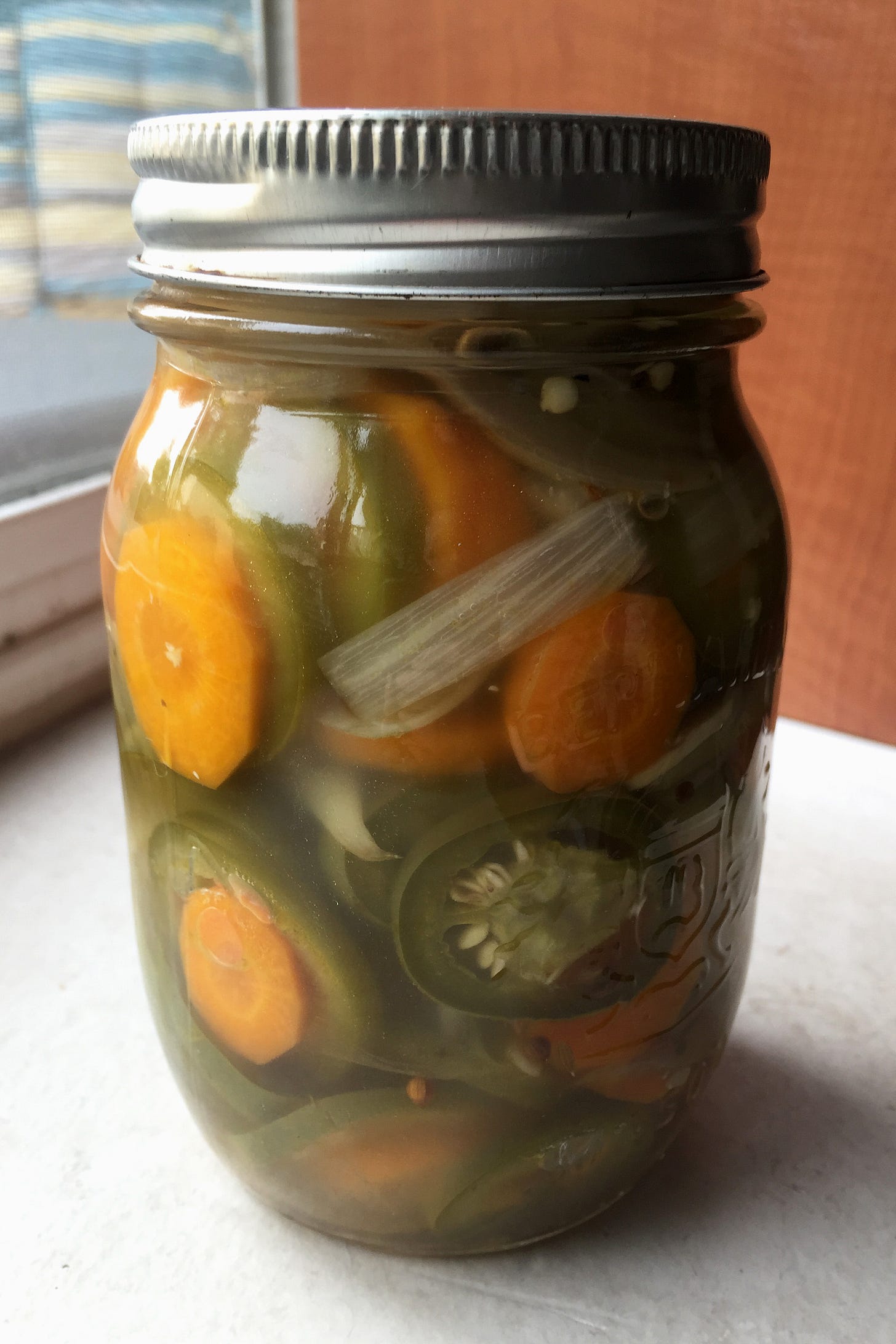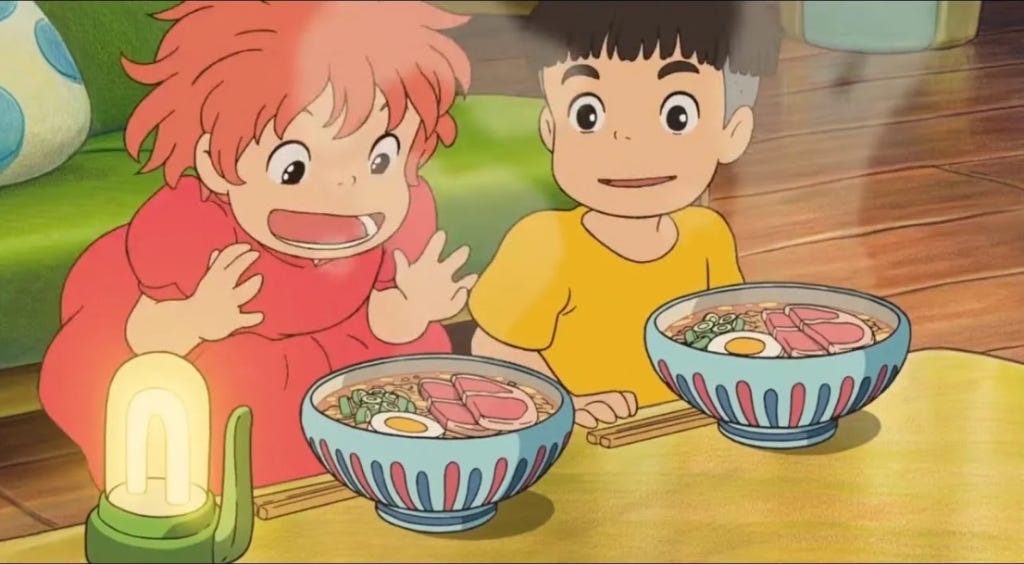The other day, in the middle of the afternoon, I found myself taking the burners out of the stove and cleaning everything. How did this happen? I had only come over there to put away a cast iron pan after making lunch, and here I was with my sink full of burner trays, scrubbing burned home brew and pasta water off the range with a magic eraser. In my experience, there are only two approaches to deep cleaning something: plan a time to do it and stick to that, or embrace the feverish inspiration no matter when it strikes. The rest of the day I kept poking my head back into the kitchen to look at my beautiful, practically stain-free stove. Sometimes you don’t realize how bad something is until you make it a little better.

My mom and stepdad have been downsizing and found themselves unable to re-sell a wonderful leather couch, and Jeff & I decided we wanted it (that is our old, peeling, IKEA couch in the photo above). Transporting a couch is no small ask at any time when you live in a city and many of your close friends and family don’t have a vehicle at all, let alone something big enough to transport a large piece of furniture, but now…? Thankfully, this past weekend we managed—with the promise of some home brew and a bottle of Similkameen Valley chardonnay— to ply a friend whose job necessitates an SUV to help us bring our free couch across five municipalities to its new home. It was a nice excuse to say hello to my parents and invite our friend to have a beer with us in the yard, even if it was humid and the weather every day for a week has been ‘smoke’.
I’m used to spending large swaths of my time alone— I generally thrive on it— and I live with other people so I haven’t been suffering as much as some from the isolation. But it hasn’t been easy. I would walk over hot coals to be safely back at the karaoke bar for a birthday party like early this year. To host a cookoff, sharing plates and crowding into the kitchen, not worrying too much if you used someone else’s fork by accident. To overhear some strangers’ conversation while sitting at the bar, accidentally getting invested, trying to pretend you aren’t listening to the details.
These days, we take what we can: a chat with a neighbour who tells us they’ve been admiring our garden, having a drink in our friends’ backyard and swapping jars of homemade preserves, finishing novels and trading them with my mom. Human life requires connection and support, and in a time when contact with other people can feel faraway and dangerous, the workarounds we have found to care for each other become so valuable.
The same friend who helped us move our couch also had a surplus of end-of-season produce at their household, and begged us to take home some tomatoes and peppers. I came home with a sack full of romas, shishitos, jalapeños, and a few surprises. I blistered the shishitos under the broiler, and decided to serve them as a soup garnish. A week or two ago I put on Almost Famous (a comfort rewatch) and made corn stock in anticipation of cooking this lovely-looking coconut corn soup from Smitten Kitchen once the weather cooled a little. Big thanks to past me: now all I had to do was pull the stock and the corn I cut from the cobs out of the freezer, and the soup came together in about 40 minutes including prep.

This is really a base recipe, with only salt & pepper for seasoning, that you can add to as you see fit: I chose cumin, coriander, and cayenne to go with the shishitos. I found the soup quite sweet even after adding juice of half a lime, so I added the other half, and some pickled onion to serve. As Deb mentions in her post, pouring the soup through a strainer after blending is a good idea if you want a smooth texture with no stray corn bits. Normally I can’t be bothered with this extra step unless it’s for a dinner party or something, but I’m glad I took the effort this time. And because a creamy puréed soup begs for bread, I also made the Ligurian focaccia featured on Salt, Fat, Acid, Heat. It requires an overnight ferment and 2 rises after you spread it in the pan, but it is absolutely worth it for the texture and flavour difference compared to one with a shorter proofing time.

Pasta with puttanesca sauce is always well-received here: salty and comforting, rich taste without feeling heavy. I don’t really look at a recipe anymore when I make it; over time I started to combine elements I liked best from a few different recipes, and now I’ve got it to a place where it’s perfect for my tastes. Blanching the tomatoes to remove the skins, sliced garlic, lots of chili flakes, a dab of anchovy paste for extra saltiness (if I’m not cooking for vegetarians), equal amounts of black olives, green olives, and capers.
Puttanesca doesn’t take long to make and incorporates only a few ingredients, but it’s still pretty customizable. The first recipe I tried used over two pounds of tomatoes with the skins on and I found it too tomato-heavy; another peeled the tomatoes but had too much pasta for the amount of sauce, and only a single tablespoon of capers! I like to use just over a pound of tomatoes and roughly a quarter cup each of the olives and capers for about 12oz of dried pasta (linguine is my usual choice).

This week I’ve been trying to use up some leftovers, so I didn’t cook as many interesting meals as usual. However, I still had piles of free produce to use up— either from our garden or our friends— so I anticipated future meals and made a few fridge & freezer items. One fun thing was pickled jalapeños with carrot, my first time making this taqueria condiment treasured by some and ignored by others. I used this recipe, making only the change of adding a few coriander seeds, and doing a half batch so I wouldn’t have two jars taking up space in the fridge. It was quick and easy to make, and I chose this version over some others I looked at because it doesn’t use sugar and has slightly more vinegar than water— for me, pickles are ruined if they’re too sweet, but they can never be too sour! I’m looking forward to these adding a bit of spicy acidity to refried bean tacos, a smoky chili, nachos, or a grilled cheese.

Media:
Watching Studio Ghibli movies on Netflix has been a balm during this tough year (previously, I had only seen Spirited Away and My Neighbor Totoro). The films, largely headed by Hayao Miyazaki, have the remarkable quality of feeling comforting and human while at the same time incredibly magical. They really show what can be done with animation when value is equally assigned to the integrity of the story, the beauty of art, and the capabilities of the viewer. As one tumblr user poetically observes, “Ghibli films look the way it feels to exist in the world”.
In this vein, much has been said about food in Ghibli movies— everyone who watches them is enamoured with how powerfully delicious the food looks. The films make our connection to food tangibly evident: it’s not so much that the food appears real, but that it has a textural, detailed element which makes looking at it on screen feel the way it feels when you experience good food in real life. A shiny, gelatinous pudding invites you to dip a spoon into it; breaded prawns sizzling in a pan of oil creates the sensation of breaking through the crisp exterior into the steaming, tender interior. As this 2017 article (worth checking out at least for the tantalizing gifs) from Thrillist puts it:
“Because they don't have to look necessarily photorealistic, drawings of food can more easily inhabit our ideals of what food should look like.”
Another more recent essay by Kiera Wright-Ruiz on Serious Eats shows that the food in Miyazaki films does more that just make us mesmerizingly hungry. The films often slow down with the food scenes in a way that celebrates the joy and community of cooking and eating:
“…the focus on preparing and enjoying food seems to make these animated worlds come to life.”
Almost every Ghibli film features some scene that creates or showcases a bond between characters through them making or eating food together. Even the simplest food shown in the movies is not without meaning: think of Chihiro in Spirited Away eating the onigiri given to her by Haku when she is in despair, and then crying not only because of her sadness but because of how it feels to have someone care for you when you feel helpless. In other words, part of what makes the world of Studio Ghibli films so moving is the way it cherishes the idea that food can be an extension of the love and care we show each other— a beautiful gift that is almost always within our ability to give.

Thanks for reading— if you enjoyed this week’s newsletter, please share it with someone who would appreciate it! And finally, please enjoy some very normal behaviour from Dana Scully.


